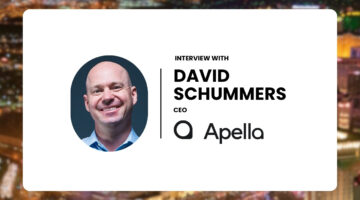
The only way to achieve clinical AI adoption at scale is to design products that serve doctors in a way that feels natural and personalized, according to one startup CEO.
This was a claim made by Tom Kelly, CEO of AI scribe company Heidi Health, during an interview last week at the Reuters Digital Health conference in Nashville.
The AI field is developing at a rapid pace — and in many ways, this makes the clinical AI space a somewhat uncharted territory for providers. Health systems often choose the wrong AI tools, and many end up switching vendors in a couple of years, Kelly noted.

Integrating GLP-1s: How Berry Street is Redefining Nutrition Care
Richard Fu details the company's approach to nutrition therapy and strategy for patients using GLP-1s.
When a new type of AI tool emerges, health systems tend to pick “first-generation” tech products at first, Kelly said these tools are often selected based on the ease of integration, rather than usability or clinical relevance.
“A good example is population health products. Epic has one, and there’s a bunch of different vendors. Over 5-10 years, the company that sort of broke out was Innovaccer. It’s one of the companies that actually came later and spent more time figuring out the right use cases and the incentives,” he explained.
In Kelly’s view, health systems need to focus on usability and the likelihood of clinician adoption when purchasing an AI tool in a competitor-rich category. He noted this is especially true for AI scribes.
AI scribes require a doctor-first approach, Kelly declared. Users will abandon tools that feel generic or awkward, so clinician adoption is the real challenge and should be the priority, he stated.

Transforming the OR: CEO Reveals Game-Changing AI Tech for Better Efficiency
How Apella leverages technology to increase OR efficiency.
“What you’re trying to do is replace what the doctor is doing in their head — the work of writing the note that they were going to type or dictate. You’ve got to get inside the mind of the doctor and think like them — there’s all these little, hidden preferences in the way that they write. I was a surgeon by training, so I used to write 3/12 instead of three months. It seems subtle, but if there are enough of those differences in the way the tool writes, the doctor just will not use it,” Kelly remarked.
He said the Heidi team obsesses over making the user experience feel native and natural to each user, preserving the clinician’s distinct voice.
Too often, people “dilute documentation to make it feel like it’s all one in the same,” Kelly pointed. But in his eyes, clinical notes are an emblem of the way a clinician practices medicine.
“The brutalist, brilliant surgeon writes punishingly info-dense, no-mess notes. And when I read that, I get some feeling about what kind of doctor that person is. Or the neuropsychologist who writes this amazing, elaborate, deep interpretation of what happened with a patient at a level that I can’t even understand. And when I read their plans, it gives me a feeling about how I should trust the plan that they’ve put in place. It’s really a more creative endeavor than people think,” Kelly stated.
As time goes on, it will become even more important for healthcare AI developers to pay close attention to these types of nuances, he added.
In the next five years or so, providers will likely use AI to have conversations with patients about managing their chronic conditions, especially in value-based contracts, Kelly predicted. These types of conversations have an even higher degree of tone and style subtleties than clinical notes.
“There’s a higher degree of preference, personality and intuition that every doctor has, and that will not be able to be replaced with a singular AI that is prescribed by the organization. You can try — but you will only get 10-20% adoption,” Kelly explained.
To Kelly, adoption rates are king. He believes Heidi’s focus on clinician adoption could help it stand out from other vendors like Abridge, Suki and Ambience — especially because other aspects like integration, data structuring and revenue cycle coding are “heavily commoditized.”
Kelly declared that adoption metrics should matter more than statistics about integration and speed of deployment.
Vendors of clinical documentation AI often boast high total session numbers, Kelly noted. He recalled a presentation he saw this March at the HIMSS conference in which an executive told the audience that their company was generating notes for 500,000 sessions across 600 sites per week.
“It’s pretty easy to do a bit of math and figure out that’s probably less than a session a week for a provider. For us, our benchmark is about 25 — so if they’re doing more than 25 sessions per week, that’s a real user of the product,” he said.
Heidi offers a free tier, which allows individual clinicians to test out the tool on their own.
This model has led to organic adoption directly by clinicians, sometimes outperforming the paid scribing tools that health systems have officially implemented, Kelly remarked.
Heidi earns its paid customers once enough clinicians at an organization tell leadership that they are enjoying the tool, he said. Currently, about half of Heidi’s customers are U.S. providers, with the rest located in Australia, Canada, the United Kingdom and New Zealand.
Some of Heidi’s customers include Cedars-Sinai, NYC Health + Hospitals, Indiana Health Group and Hawse Health.
Photo: megaflopp, Getty Images






